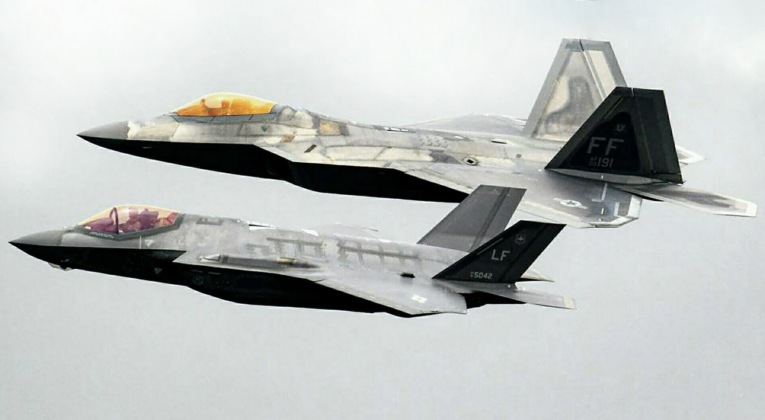Alongside China’s J-20 and the American F-35, which are today the only fifth generation fighters in the world both in production and fielded at squadron level strength, the F-22 and Russian Su-57 are two smaller and in many ways less successful next generation programs that have also entered fighters into service. Although both aircraft are operational neither has seen a prolonged production run, with orders to terminate F-22 production given less than four years after the fighter joined the Air Force while the Su-57 began serial production only in 2018. Neither benefits from key next generation features seen on the J-20 and F-35 such as distributed aperture systems and top tier network centric warfare capabilities. Where the F-22 has the advantage of superior stealth capabilities, however, the Su-57 has multiple key advantages ranging from much newer and longer ranged air to air missiles to its greater manoeuvrability, use of six radars rather than a single one, and ability to operate without a radar signature using an infrared sensor. Beyond air to air combat, however, the Su-57’s advantages are considerably more pronounced due to its less specialised design, with the F-22 having initially been designed without air to ground capabilities and even after modernisation being unable to deploy standoff air to ground weapons due to the shallowness of its missile bays. The Su-57 by contrast was designed from the outset to be as capable in strike, anti shipping and electronic attack roles as it was in air to air combat.

The Su-57’s greater versatility is partly a legacy from the Soviet era, where all fighters pursued from the late 1980s had a multirole capability including the ability to use beyond visual range air to ground weapons. This included the F-22’s direct rival developed under the MiG 1.42 program which was scheduled to enter service in the late 1990s or early 2000s before the Soviet collapse stalled and then ended the highly ambitious development effort. A further reason was that the F-22 was intended to be deployed alongside aircraft specialised in strike operations, most notably the F-35 developed under the aptly named Joint Strike Fighter program which was built with a much more limited air to air capability but was well suited to air to ground and electronic attack roles. The Su-57 by contrast, even moreso than the MiG 1.42, was designed without a lightweight counterpart to fly alongside it meaning it needed to be capable of operating in all roles. The result is that while the F-22 can deploy only low diameter gravity bombs, the Su-57 deploys not only an array of cruise missiles with ranges in the hundreds of kilometres, but also nuclear weapons and in future hypersonic ballistic missiles which began flight testing in February 2021.

The F-22’s limitations meant it went nine years after entering service without seeing combat, before being deployed from September 2014 for largely symbolic strikes in Afghanistan and Iraq. It was widely highlighted at the time that much lower maintenance and cheaper aircraft such as F-16s could have done far more cost effectively. While the F-22’s advanced stealth capabilities would make it an ideal strike fighter against well defended targets if it could strike from beyond visual ranges, the fact that it needs to fly very close to its targets to engage largely nullifies the benefits of stealth. The Su-57 by contrast saw combat before even entering service due to its ability to deliver very long ranged cruise missile strikes, with prototypes deployed to Syria in February 2018 to support Syrian government counterinsurgency efforts. After more than one deployment to Khmeimim Airbase in Western Syria, the Su-57 subsequently saw deployments to Ukraine from March 2022 where they participated in strikes on Ukrainian government forces.
Where Russian combat jets have given Ukrainian air defences a wide berth, meaning dropping gravity bombs would not be possible, the ability to use cruise missiles such as the Kh-59MK2 makes the aircraft far more flexible. The missile first tested in Syria was designed as a primary air to ground armament for the Su-57, and is optimised for neutralising small hardened targets at extreme ranges of close to 300 km. While the F-22 is not expected to receive new air to ground weapons, the Su-57’s arsenal combined with its unmatched endurance makes it a potentially world leading strike fighter, and could thus facilitate a much larger production run than would have been possible had it been designed as the F-22 had solely for air superiority. This has implications not only for Russian orders, but also for foreign interest in the fighter and for the frequency in which units both in Russia and abroad will be able to participate in combat operations as air to ground operations continue to far outnumber air to air ones.
